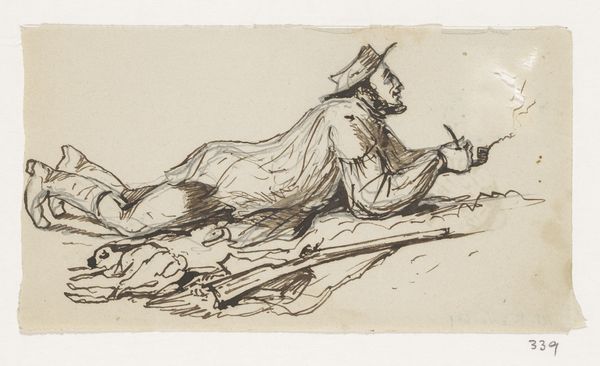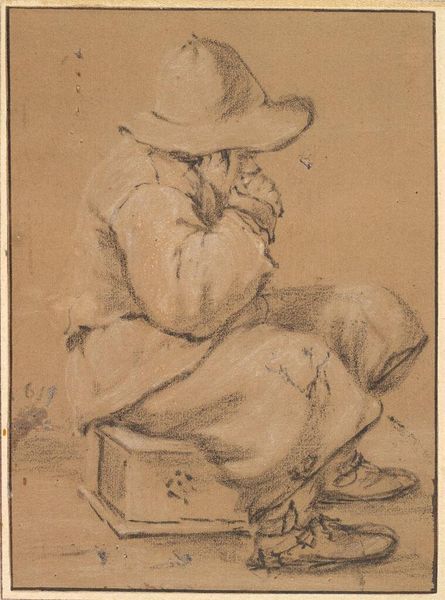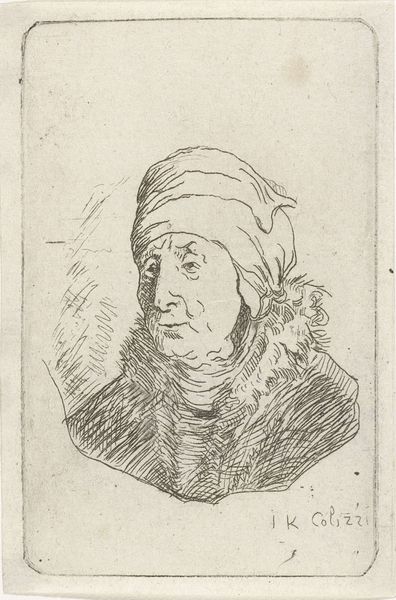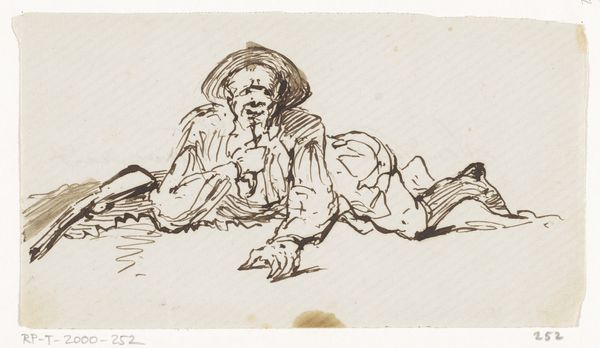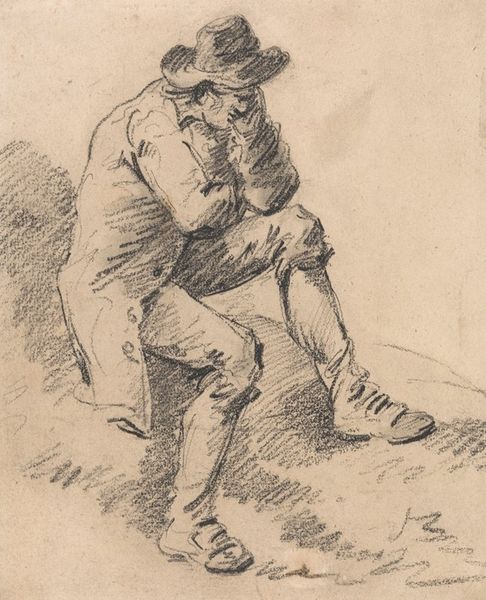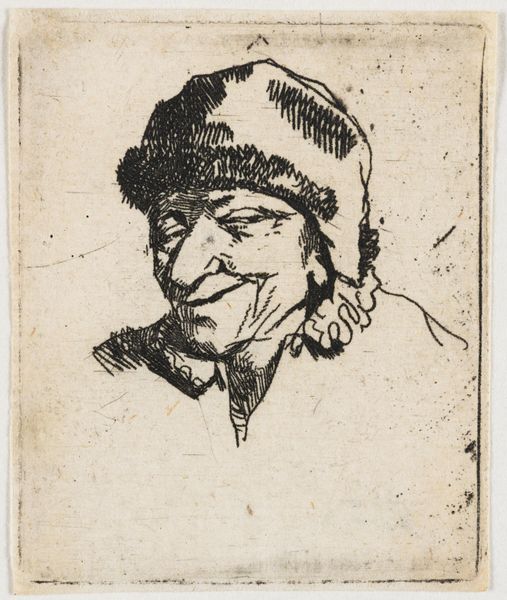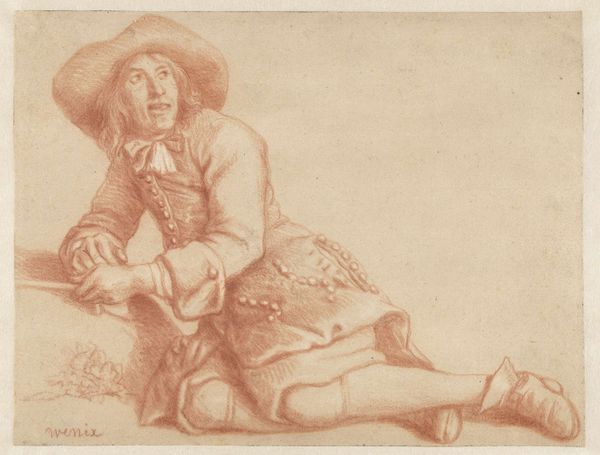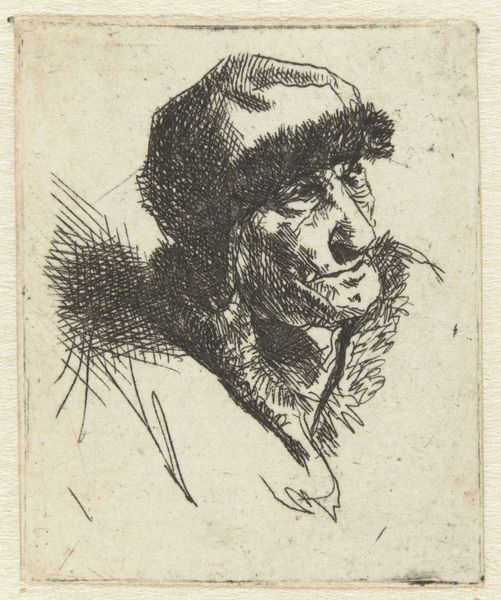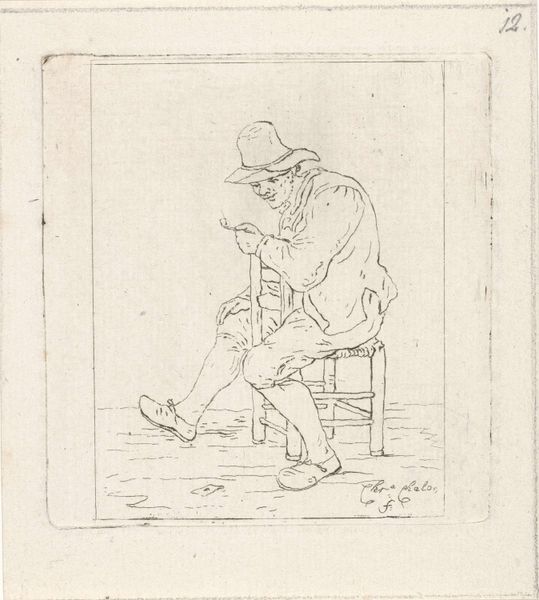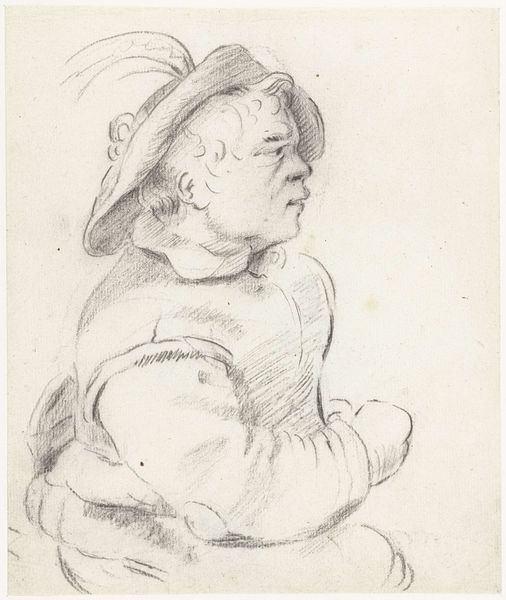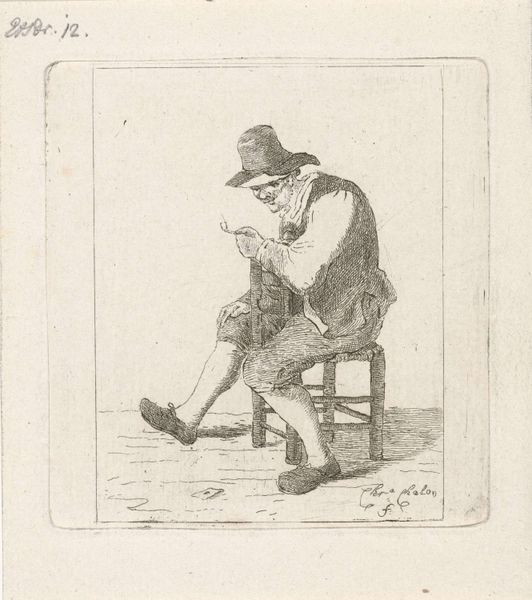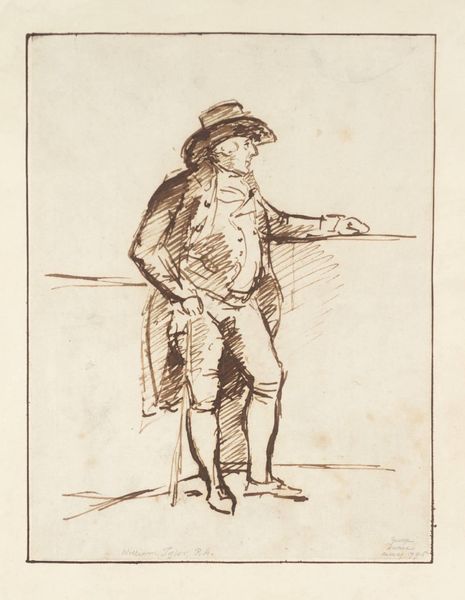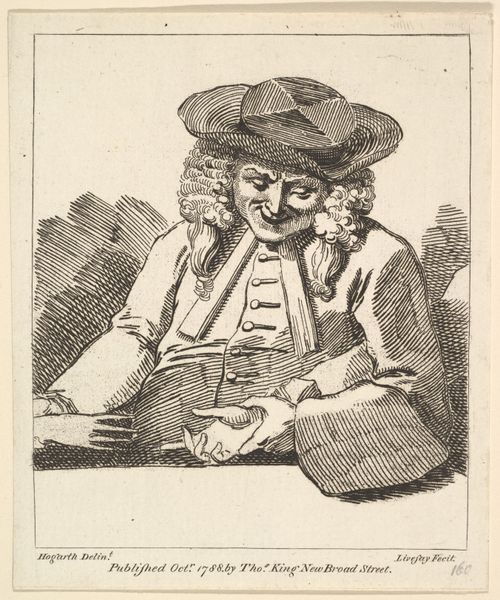
Portrait of Willem Bartholsz. Ruyter 1638
0:00
0:00
rembrandtvanrijn
Rijksmuseum, Amsterdam, Netherlands
drawing, charcoal
#
portrait
#
drawing
#
baroque
#
charcoal drawing
#
portrait drawing
#
charcoal
Copyright: Public domain
Editor: Here we have Rembrandt van Rijn’s “Portrait of Willem Bartholsz. Ruyter,” a charcoal drawing from 1638. I’m struck by how intense his gaze is, even in such a quick sketch. It feels almost confrontational. What stands out to you? Curator: The hat! Note the deep shadow it casts; consider how effectively it draws our eye and how such garments in art act like secular halos of accomplishment or earthly dominion. Also observe his hands, their positioning conveying not labor, but contemplative ease. This isn't a king, yet there is a regal air to his repose. Editor: That’s a really interesting point about the hands. So, the pose itself is symbolic, not just the hat? Curator: Precisely. Body language in portraits carries weight. Rembrandt uses familiar motifs – the dark hat, the resting hands, the stern face–to tell us something specific about the sitter's social standing, and about the artist's understanding of his culture. Editor: So even in a sketch, Rembrandt is deliberately employing these symbols to communicate power and status? Curator: Absolutely. Look, how else could he create such an impression with mere charcoal? Each stroke is imbued with cultural memory, consciously placed to evoke meaning, and even trigger a psychological response in the viewer. What do you think he's remembering, there behind that hard gaze? Editor: It’s fascinating how much symbolism can be packed into such a simple drawing. Curator: Yes, this piece exemplifies how portraits do more than just depict a likeness; they’re carefully constructed messages meant to endure and impress.
Comments
No comments
Be the first to comment and join the conversation on the ultimate creative platform.
